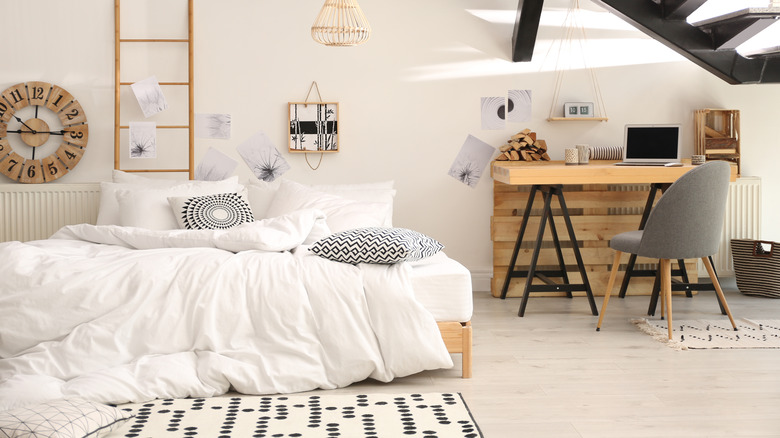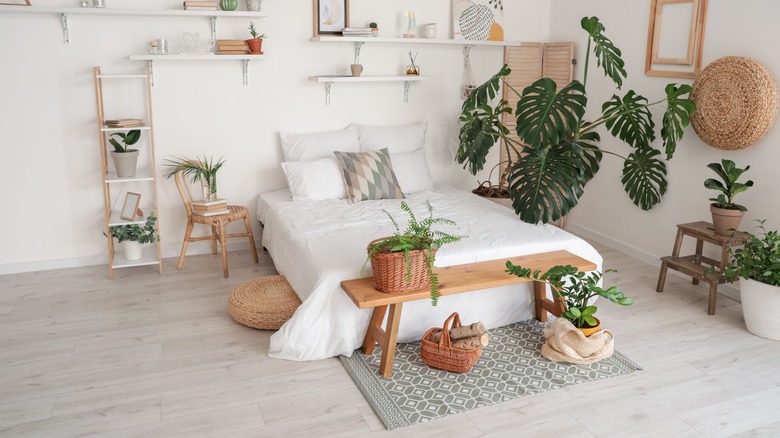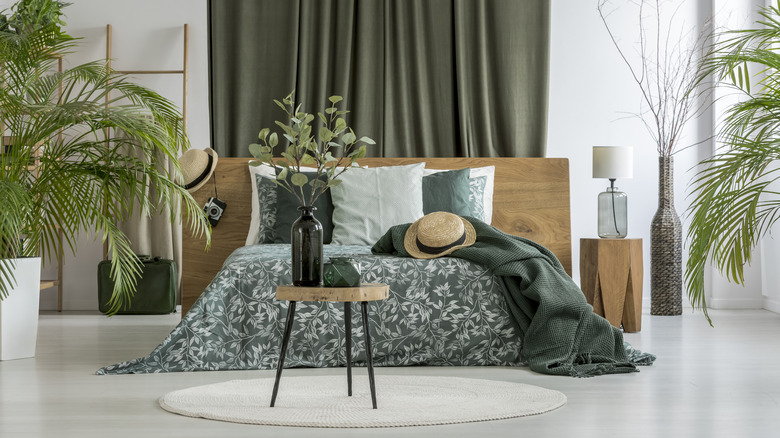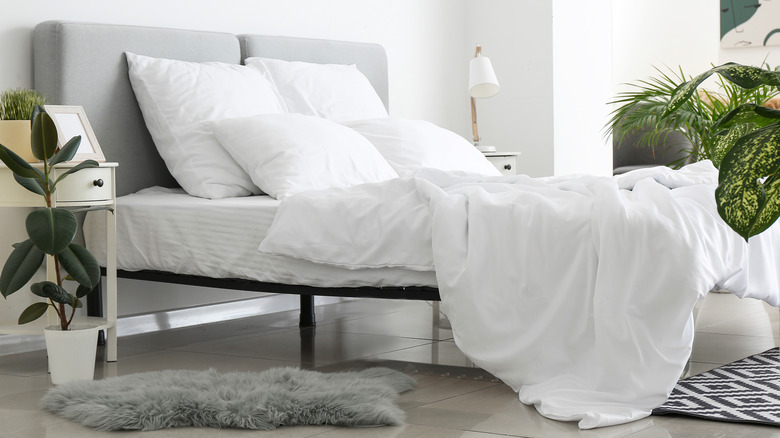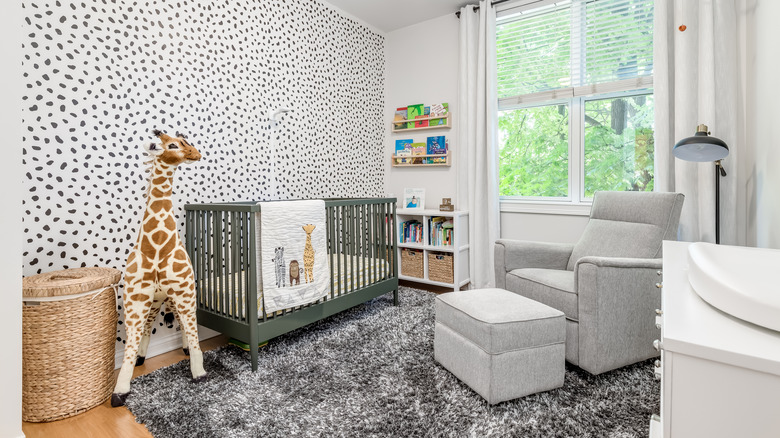How To Choose The Right Rug For Under Your Bed
If you have hardwood floors, rugs should be one of your best friends in terms of home decor. Rugs add character and warmth to a space and can also provide comfort and functionality. Since rugs cover smaller areas than carpets, you have the flexibility to bring in different types, shapes, and designs when decorating the different parts of the house.
As with most home decor staples, there are various creative ways to use a rug. You can put it in a children's play area, hang it on the wall, or use it to prevent scratches on the floor, lists Frances Hunt. This guide focuses on the use of rugs under the bed. Placing a rug under your bed takes more thought than choosing a rug that looks nice. The placement, size, and primary function are some of the things you need to consider to choose the right one. Whether you want to stick to the standard use of rugs or branch out and try something different, these are what you need to know to ensure you make the right choice.
1. Take accurate measurements
If you are planning to place the rug directly under your bed, you should get a rug that is significantly bigger than the bed's dimensions, so it doesn't get completely hidden. Rugs are usually expensive due to the quality of materials and labor that go into making them, so your rug should be seen well. As you measure your bed, also count the space taken up by any side tables or additional chairs near the bed. This is because it might look awkward if the rug can only partially cover the ground under them.
If you don't need the rug to sit under the bed completely, you can play around with the placement and size of the rug, says Bassett. Don't have a lot of space in your room? Try using several smaller rugs in various areas, such as on either side of the bed that you can appreciate as you climb in and out of bed (via The Decorologist).
2. Choose a shape
Rectangular rugs are most common since that's the usual shape beds come in. The straightness of the edges creates a conventional shape that is always dependable because you don't have to think too much about what direction to place it in. Rectangular rugs can make the room feel bigger, which is great if you do have space. However, they can make the place feel cramped if they are smaller since they may be hidden and placed under the bed.
Shapes are an important aspect of the decision when choosing a rug, especially if you want to be creative and think outside of the box. To play with illusions, a round or oval rug can stand out as a piece of interest in your space, per Wild Creative Project. Round rugs are also best suited for circular-shaped beds. An asymmetrically shaped rug can also add a contemporary feel to the space, as shown by House Tipster.
3. Play with texture
All the textures in the room should complement each other and work hand in hand. Getting the right texture is a huge part of designing a comfortable and beautiful room — you don't want clashes to happen! This is important because the bedroom is supposed to be a calming place of rest.
One way to use rugs when it comes to texture is by breaking up the dominant decor theme in a way that is still cohesive. If the texture of your bedding is something strong like faux fur or velvet, then the rug under your bed should be light. If you have silk or satin bedding, you can make a statement by putting down a fuzzy rug. If you're looking to add more than one rug to your bedroom, texture is necessary to consider when layering. Floorspace advises keeping a light, neutral rug at the bottom and then making the rug on top the star of the show.
4. Placement is key
There are many placement options when it comes to bedroom rugs! They can be placed conventionally, which means vertically and aligned with the bed. They can also be placed horizontally at the head or foot of the bed. In this position, the rug might also be under the bedroom bench or side tables — whichever is more essential for you. Collective Gen suggests placing a rug on the side of the bed if the bed is against the wall or placing two small rugs on both sides of the bed if you're unable to find one big enough to fit. If you are more daring and choose an asymmetrically shaped rug, you can place it at a slanted angle under the bed, per House Tipster.
The right rug placement can be functional or aesthetic as it defines a certain space. For example, a rug directly under a bed in a bedroom with multiple parts like a work area and sitting area distinguishes the sleeping area from the rest of the room. In terms of functionality, a rug can provide space for exercise or physical activity like yoga, says My Decorating Tips.
5. Keep to your design theme
The bed is the main part of your bedroom, and you've chosen the other elements of the room based on it. Choosing a rug that fits into the design theme of your bed, bedding, curtains, drawers, and walls is crucial. Everything doesn't have to match exactly, but it should all harmonize. Something to think about is if you want to include a statement rug. You might love a rug you've seen while shopping, but if it overwhelms what you already have or sticks out in a bad way, rethink.
Patterned rugs can be tricky but look great when done well. Try soft colors if you want to go with a bold pattern like animal prints, says One Kings Lane. You can also opt for classic patterns like stripes and spots, which are usually simple to add to the current theme. According to One Kings Lane, "go easy when you go wild in the rug department."
